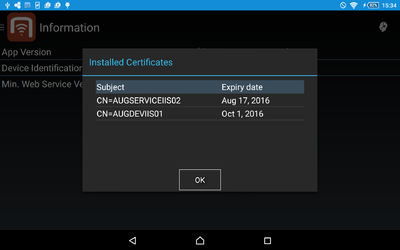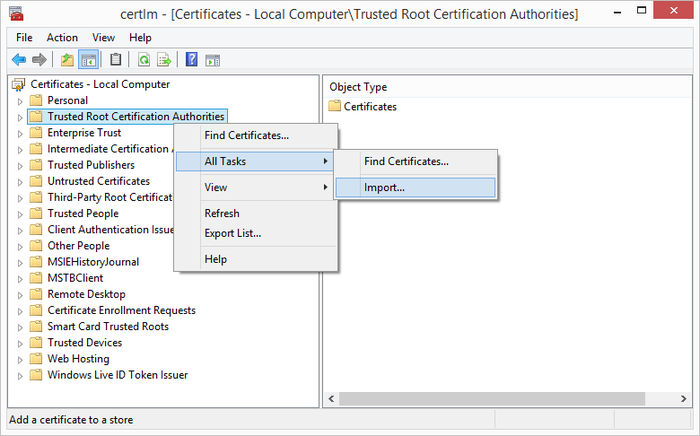Difference between revisions of "HowTo:Install UBIK Client Certificate"
m (→WinX / Web) |
m (→WinX / Web) |
||
| Line 49: | Line 49: | ||
The clients, either WinX or Web, need to have a certificate installed if the connection to the web service should use secure communication (HTTPS). This certificate can either be a root authority certificate, a self-signed or any other public key certificate from a certificate authority enabling a secured connection between the web service and the clients. | The clients, either WinX or Web, need to have a certificate installed if the connection to the web service should use secure communication (HTTPS). This certificate can either be a root authority certificate, a self-signed or any other public key certificate from a certificate authority enabling a secured connection between the web service and the clients. | ||
| − | If you already have a | + | If you already have a public key certificate available you can use this on the clients and web service. Otherwise you can create a certificate as described in [[HowTo:Create_UBIK_Web_Service_Certificates]]. |
| − | + | As the {{UBIK Web}} client connects to the content server similar as any mobile client it needs also to be authorized using a certificate. Hence, whatever machine hosts the {{UBIK Web}} client application needs to have the certificate installed. | |
=== Install Root Authority Certificate === | === Install Root Authority Certificate === | ||
Revision as of 08:18, 15 February 2016
This how-to describes how to set up a client certificate to enable a secure channel to the web service.


